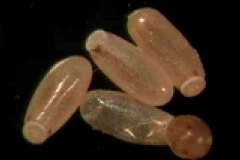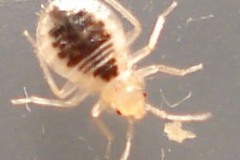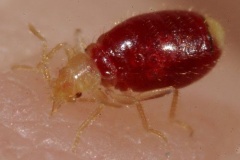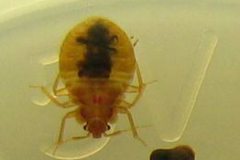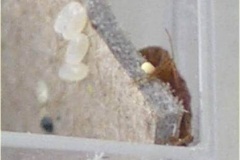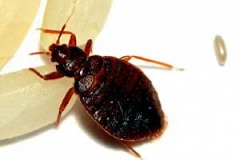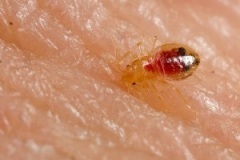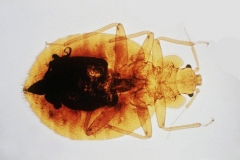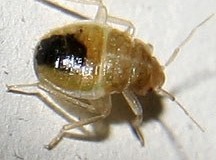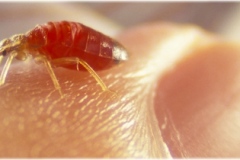There are a number of things that attract bed bugs. At the same time, there are other things these little creatures hate to death. These are attractants and repellants respectively. Detection of bed bugs heavily relies on the attractants, while prevention and control are based on those that they dislike. Read on to find out more
It is always thought that bed bugs are attracted to dirty and unhygienic homes. What then explains an infestation of bed bus in clean homes? There are more reasons that explain the existence of bed bugs at homes among other areas.
A number of researchers have found that carbon dioxide is one of the most effective attractant to bed bugs, as noted by Philip Koehler, an entomologist at the University of Florida-Gainesville, while addressing 2018 annual Entomological Society of America meeting.
According to Koehler, human beings are said release about 700 mg of carbon dioxide every minute which is an amount enough to lure quite a good number of these bugs.
Being attracted to carbon dioxide is what makes them able to also feed on other organisms besides human beings.
Bed bugs rely on food as a source of their livelihood. Failure to get enough blood means that they will not reproduce and therefore die off. That is blood free of alcohol. A few traces of alcohol is thought to drive them away.
There are some claims that point out that bed bugs are more attracted to blood type O more than any other blood type.
Histamine is a chemical that is produced by human white blood cells. This is usually a part of the immune response and it acts as an attractant to the bed bugs.
This has formed the basis upon which scientists synthesize compounds to put bed bugs under control. Bed bugs are strongly pulled to these compounds perhaps because of their smell.
When you are asleep, your body produces some heat as a way of regulating the temperature below the sheets.
This makes it very conducive for the bed bugs. When you share a bed sheet with another person you create a better deal because more heat is generated.
It has been established that bed bugs are attracted to bed sheets that are black in color compared to other colors. The reason for this is because the black color mimics the darkness which the bed bugs are used to.
Bed bugs also like the red color not because they look like blood but because the red color is similar in to an adult bed bug after it has taken a blood meal.
The good smelling compounds that attract bed bugs include pheromones that bed bugs use to get into a particular area. There are other chemicals that are sweet smelling that could act as attractants. The most effective ones are known as aldehydes. They have sweet odor and they are able to travel in the air from one point to another.
Bed bugs normally pick up the scent from one point and then tend to move towards the more concentrated areas. It has also been established that female bed bugs produce the scent so as to attract the male counterparts for reproduction.[1]
The information to support this is scanty but some people allude that sperms are a good source of proteins and therefore it is not surprising for bed bugs to gather around them. Other reviews point out that bed bugs feed on liquid smelly materials.[2]
This is absolutely not true because bed bugs are majorly attracted to carbon dioxide and heat. The nature of their mouth parts are meant to pierce into the skin.
They are therefore not attracted to the blood that is not under the skin. This is to mean that the blood outside the body in this case period blood would not entice them.
Bed bugs are nocturnal animals and are therefore very sensitive to any light. If you subject your mattresses to a lot of bright light, you will disturb their survival to a great extent. They are rarely active when there is a lot of light.
This is reason enough to explain why the bed bugs come out to feed at night. This does not eliminate the possibility of feeding during the day. They also could come out and feed at day time.
Despite the existence of many things that attract bed bugs, there are other things that push the bed bugs away. This is because they are indeed hated or some of their ingredients are hated by the bed bugs. Here are some of them:
Whenever temperatures fall below a certain point, bed bugs can become inactive. Despite so, this is not an effective method to eradicate bed bugs. Bed bugs only become inactive during these periods and then become active once the periods end. They hate this time because they cannot get out to get blood meals.
A simple and old-fashioned soap together with moisture is good enough to repel and kill bed bugs. Therefore, when these components come into use, the bed bugs run away as they scamper for safety.
There are so many users who have used the jelly and reported that the bed bugs run away in their presence. The particular jelly that is used is Vaseline. There is no supportive evidence that is based on science which validates the use of the jelly to scare bed bugs.
This is an insect repellant that is obtained from the Neem tree, either the leaves or the seeds. This is a remedy that has a wide use in India and bed bugs have been found to hate its smell as it is known to be very insecticidal.
This oil has also demonstrated valuable use over a wide range in various areas to treat various injuries and diseases.
This is a powder that is mined and obtained from the diatomite. It is pesticidal and bed bugs would run away when the powder is in sight.
The powder is nontoxic to human beings but very harmful to the bed bugs. The bed bugs will run away from the powder because the silica that is present has sharp edges that could cut into the exoskeleton of the bug.
The use of pesticides and insecticides is one of the commonest bed bug procedures for a long period of time. These pesticides are used with a number of pest control exterminators.
How effective the exterminators vary from one company to another. Because the pesticides threaten the existence of bed bugs, they abhor them immensely
Bed bugs will always try to move away from your bed if you sprayed it with this powder. Many products in the market are designed to have the powder. Simply apply the powder directly on the legs of your bed or even the frames.
This is the smell that bed bugs hate the most. Out of the many sprays that contain lavender, you could settle on one of them that is the purest.
Spraying the oil around your bed or even applying some skin products that contain lavender before you go to bed chases the bed bugs away. By so doing, you are able to keep bed bugs away from your skin and bedding.
Dryer sheets contain a fragrance. They make the room smell better and as a consequence, they may mask the smell of carbon dioxide that you release while asleep. This therefore mean that the bed bugs would not be able to trace you by virtue of the CO2 that you produce when sleeping.
This method is however not a completely effective method to handle bed bugs but it is worth trying. As you use it, also have other methods to eradicate bed bugs.
Bed bugs hate tea tree oil. However, the oil can irritate your skin and therefore you should always dilute it before using. Despite this being the case, diluted oil is not so effective in repelling bed bugs.
There is no scientific proof to show how effective the oil is. In addition, it does not have residual and long lasting effects when applied.
Some expert information points out that bed bugs hate alcohol. In fact, alcohol is one the known substances used to get rid or kill of these bugs.
The alcohol irritates the body of bed bugs and therefore spraying the infested areas with alcohol could keep them at bay.
Many bed bug control products have been manufactured to incorporate alcohol as one of their ingredients.
You should cover your skin with products that contain alcohol before you go to sleep.
Always talk to a dermatologist so as to obtain the best product in this case.
Ensure that the alcohol product you use does not irritate your skin. Further, if you are allergic to a certain product, you can choose an alternative one.
Further Reading
Sources
[1] https://www.popsci.com/sweet-smelling-bug-control-option
[2] https://www.quora.com/Are-insects-attracted-to-sperm
More:
What Attracts Bed Bugs & things they Hate /Dislike Most ...

 Residence
Residence  Location
Location 

